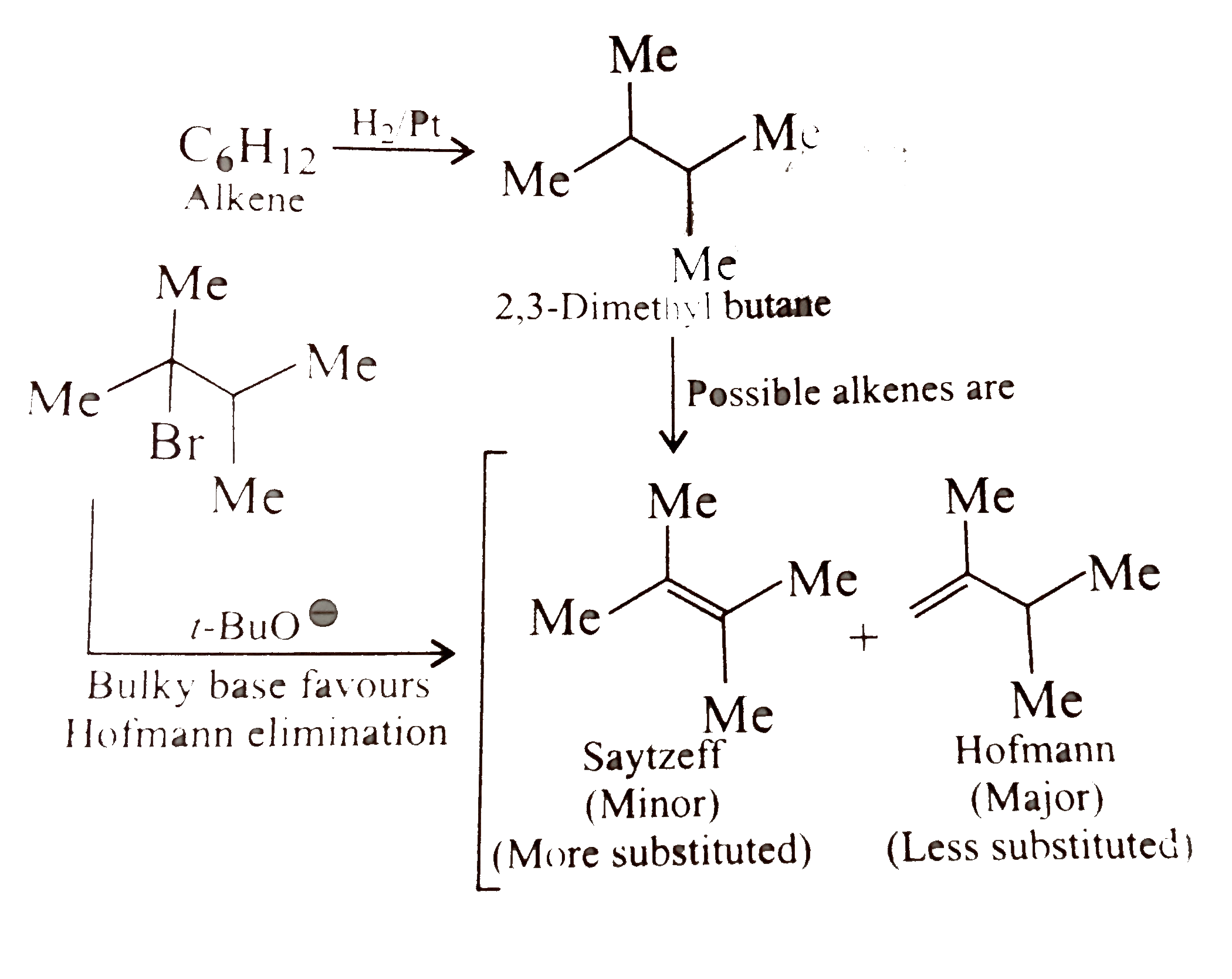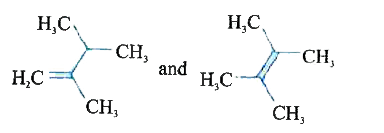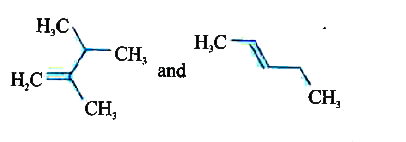An alkyl halide of formula C6H13Br on treatment with potassium t-butoxide gives two isomeric alkenes dimethy butane. Isomeric alkene are :




The correct Answer is:A
 .
.
Topper's Solved these Questions
- ORGANIC REACTION MECHANISMBOOK - CENGAGE CHEMISTRYCHAPTER - ORGANIC REACTION MECHANISMEXERCISE - Assertion-Reasoning
12 Videos
- ORGANIC REACTION MECHANISMBOOK - CENGAGE CHEMISTRYCHAPTER - ORGANIC REACTION MECHANISMEXERCISE - Archives
8 Videos
- ORGANIC REACTION MECHANISMBOOK - CENGAGE CHEMISTRYCHAPTER - ORGANIC REACTION MECHANISMEXERCISE - Multiple Correct
30 Videos
- NCERT BASED EXERCISEBOOK - CENGAGE CHEMISTRYCHAPTER - NCERT BASED EXERCISEEXERCISE - Chemical Equilibrium
72 Videos
- P-BLOCK GROUP 13 - BORON FAMILYBOOK - CENGAGE CHEMISTRYCHAPTER - P-BLOCK GROUP 13 - BORON FAMILYEXERCISE - Exercise Archives (Subjecive)
9 Videos
Similar Questions
An alkyl halide (X)of the folmula C6H13Cl on treatment with potassium tertiary butoxide gives two isomeric alkenes (Y) and (Z)(C6H12). Both the alkenes on hydrogenation give 2,3−dimethyl butane. Perdict the structures of (X),(Y) , and (Z)
View SolutionAn alkyl halide (A) of formula C6H11Cl on treatment with potassium tertiary butoxide gives two isomeric alkenes (B) and (C) C6H10. Both alkene on hydrogenation give methylcyclopentane. Predict the structure of (A), (B) and (C).
View Solution
Knowledge Check
An alkyl halide of formula C6CH13Cl on treatment with potassium t-butoxide gives two isomeric alkenes (C6H12). Both alkenes on hydrogenation give 2,2-dimethylbutane. Isomeric alkenes are
ACH2=C∣CH3−C∣CH3H−CH3andCH3−C∣CH2=C∣CH3−CH3BCH2=C∣CH3−C∣CH3H−CH3andCH3−CH=CH−CH2CH3CCH3−CH=CH−CH2CH3and(CH3)2C=(CH3)2DCH2=C∣CH3−C∣CH3H−CH3andCH2=C∣CH3−CH2−CH2−CH3An alkyl halide of formula C6H13CI on treatment with potassium t-butoxide given two isomeric alkanes (C6H12) . Both alkenes on hydrogenation give 2,3 dimethyl butane. Isomeric alkanes are
A B
B C
C D
D
An organic halide with formula C6H13Br on heating with alc. KOH gives two isomeric alkene (A) and (B) with formula C6H12. On reductive ozonolysis of mixture (A) and (B) ,the following compounds are obtained :
CH3COCH3,CH3CHO,CH3CH2CHO and (CH3)2CHCHO
The organic halide is :A2-bromohexaneB3-bromo-2-methylpentaneC2, 2-dimethyl-1-bromobutaneD2-bromo-2, 3-dimethylbutane
An alkyl halide (X)of the folmula C6H13Cl on treatment with potassium tertiary butoxide gives two isomeric alkenes (Y) and (Z)(C6H12). Both the alkenes on hydrogenation give 2,3−dimethyl butane. Perdict the structures of (X),(Y) , and (Z)
View SolutionAn organic compound (A) of molecular formula C4H9Cl on treatment with alcoholic KOH solution gives 3 isomeric alkenes. The stble alkene among the three (B), was treated with aqueous Br2 solution which resulted in (C). (C) on treatment with NaOH liberated a gas with the formation of (D). (D) on treatment with CH3MgCl followed by hydrolysis gives (E). (E) on treatment with H+/HBr gave (F) and (F) on treatment with alcoholic solution of NaOH gave (G). if (G) can't show geometrical isomerism identify the structures of (A) to (G).
View SolutionAn alkyl halide with molecular formula C6H13Br on dehyrohalogenation gives two isomeric alkenes X and Y with molecular formula C6H12. On reductive ozonolysis X and Y gives four compounds CH3COCH3, CH3CH2CHO and (CH3)2CHCHO. The alkyl halide is
View SolutionAn organic halide with formula C6H13Br on heating with alc. KOH gives two isomeric alkene (A) and (B) with formula C6H12. On reductive ozonolysis of mixture (A) and (B) ,the following compounds are obtained :
CH3COCH3,CH3CHO,CH3CH2CHO and (CH3)2CHCHO
The organic halide is :
View SolutionAn alkyl halide of formula C4H9Cl on treatment with alcoholic potash gives alkenes C4H8. Both alkenes on treatment with HI give 2-iodobutane. Isomeric alkenes are
View Solution
